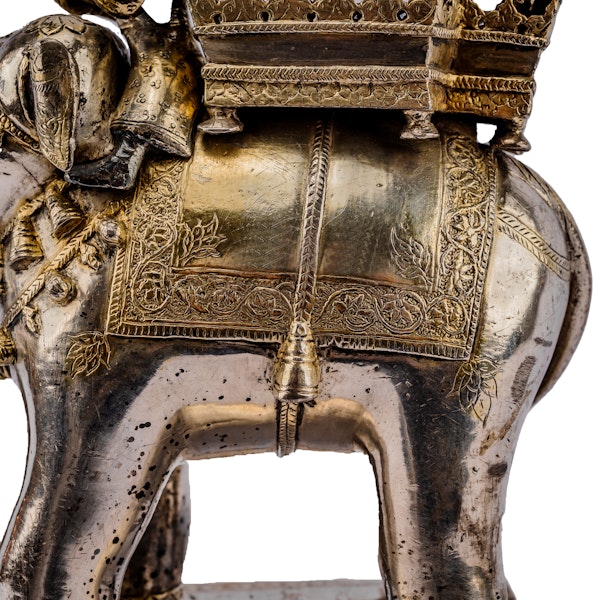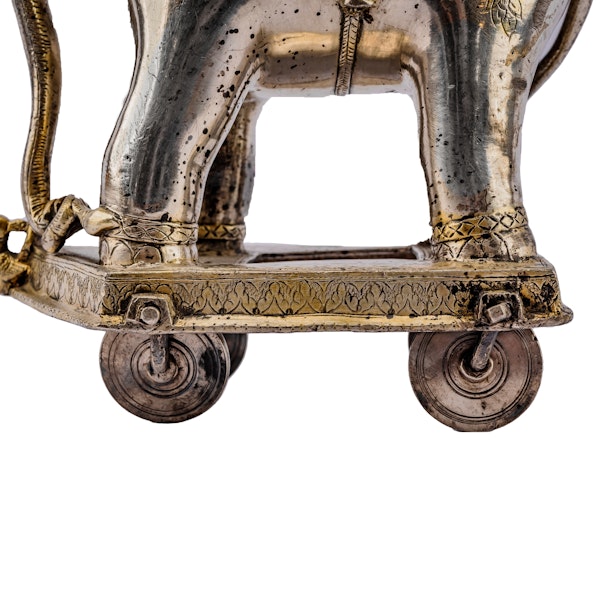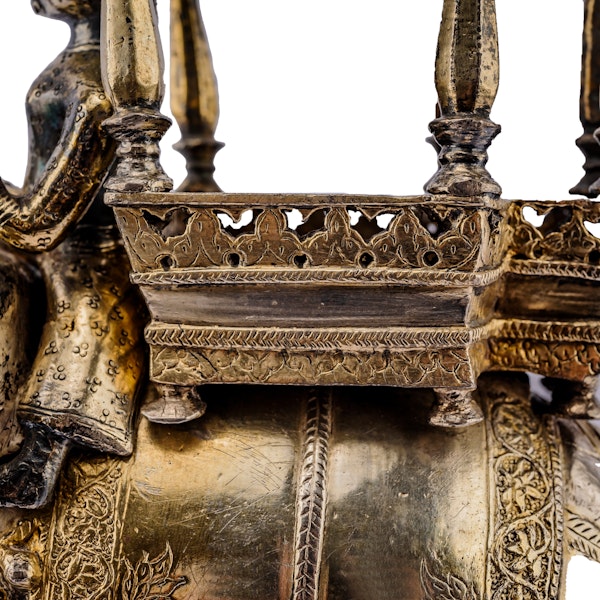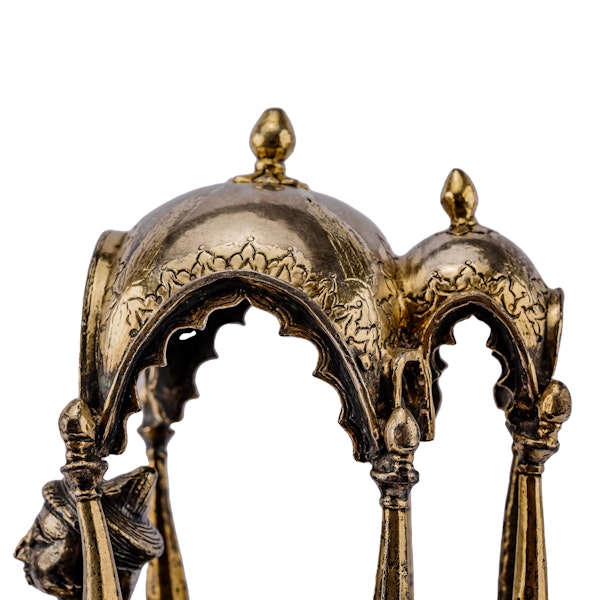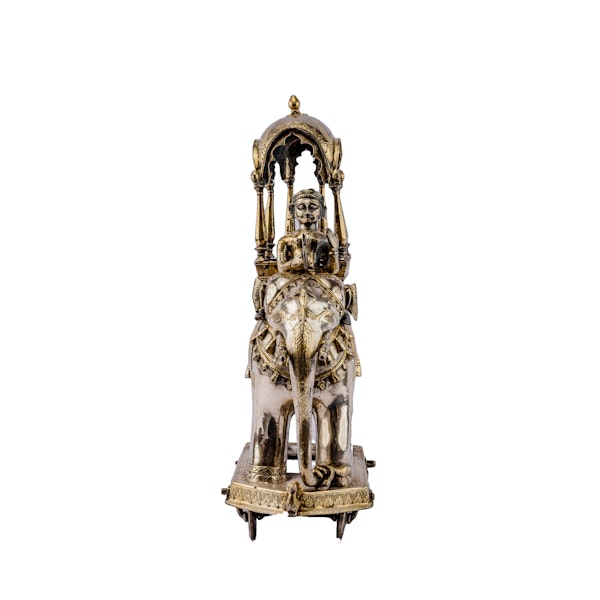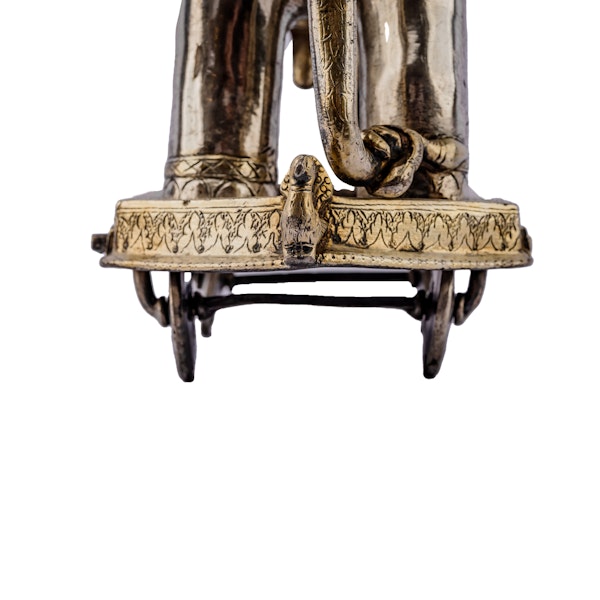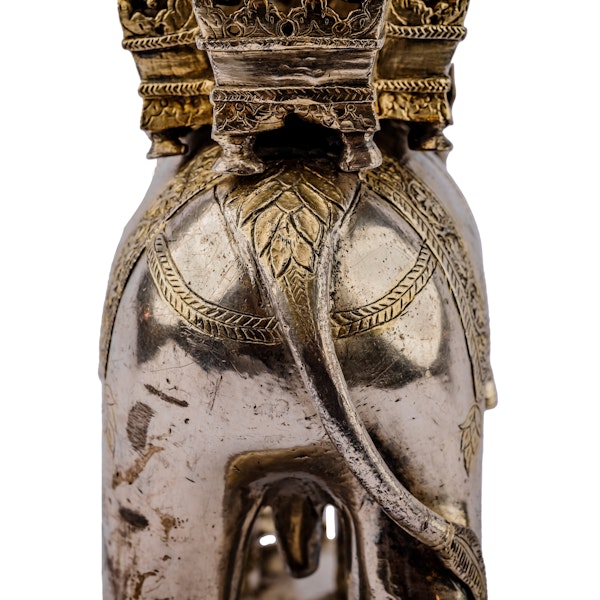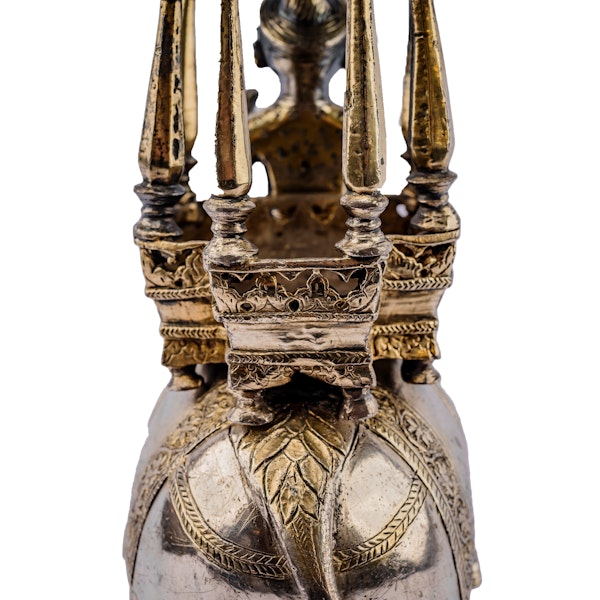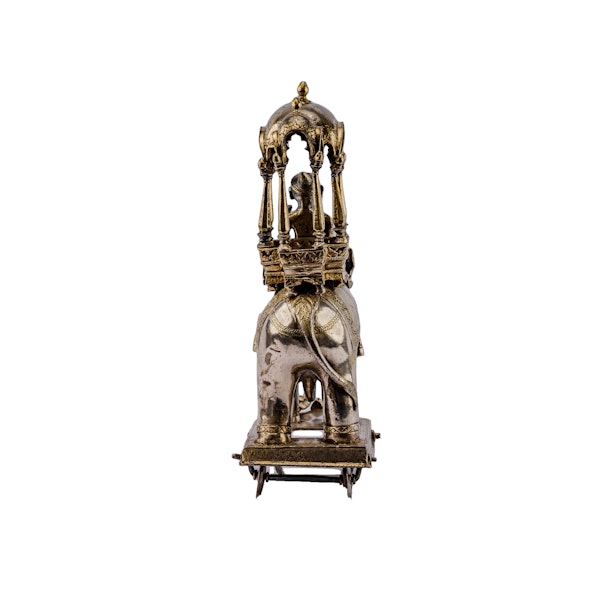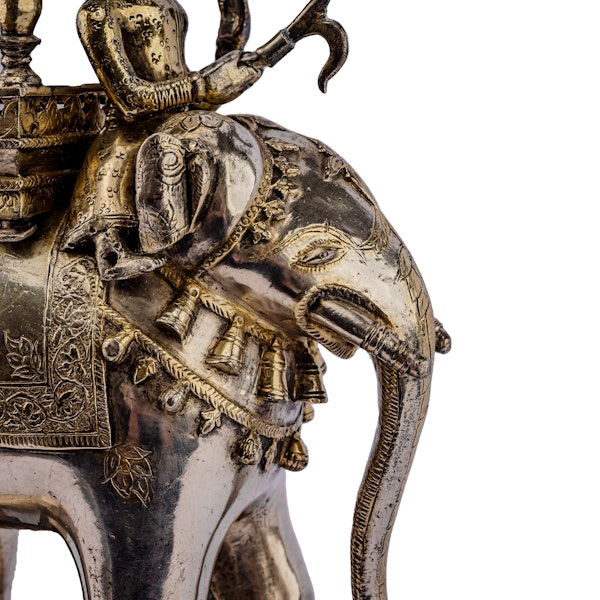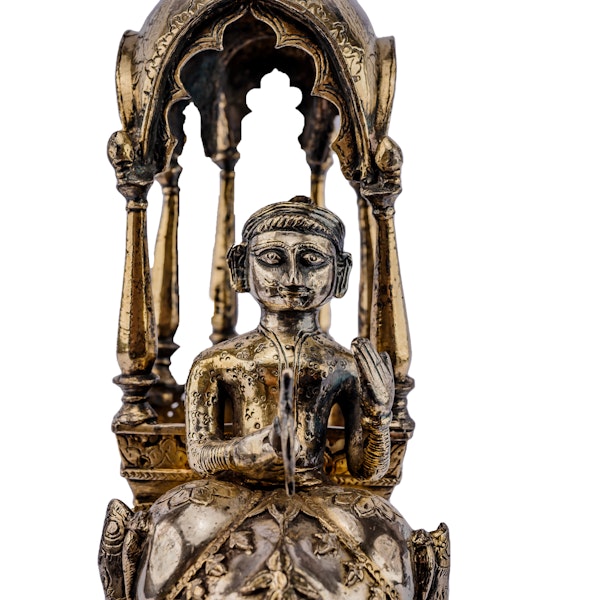A fine and rare early 19th century Indian silver and parcel gilt elephant toy.
A fine and rare early 19th century Indian silver and parcel gilt elephant toy.
£16,000.00
Description
A fine and rare early 19th century Indian silver and parcel gilt toy. Modelled as an elephant, richly caparisoned with bells and floral adornments, with elaborate howdah and ridden by an elephant driver in a decorated tunic holding a combination axe and ankus the whole mounted on a decorated base with four wheels. The elephant has a long and complex history in the culture of the Indian sub-continent. The Asian elephant appears in various religious traditions and mythologies. They are treated positively and are sometimes revered as deities, often symbolising strength and wisdom. According to the Hindu cosmology of ancient India the Earth is supported and guarded by mythical World Elephants at the compass points of the cardinal directions. The classical Sanskrit literature also attributes earthquakes to the shaking of their bodies when they tire. Wisdom is represented by the elephant in the form of the deity Ganesha, one of the most popular gods in the Hindu religion's pantheon. In Hindu iconography, many devas are associated with a mount or vehicle known as a vāhana. In addition to providing a means of transport, they symbolically represent a divine attribute. The elephant vāhana represents wisdom, divine knowledge and royal power; it is associated with Lakshmi, Brihaspati, Shachi and Indra.
The strong association of the elephant with wisdom, strength and royal power has naturally become a strong artistic and cultural trope in India. From large stone carvings to humble models of clay or wood the elephant has been portrayed as both a sacred animal and an emblem of power. The peak of such representations lies in the Mughal period when the great age of miniature painting produced many images incorporating the elephant as part of an elaborate royal iconography.
A Company painting of an Elephant with a Howdah c.1850
Moving models, such as this example, originate in the long tradition of idol cars. These vehicles, often of large scale, were produced to carry a representation of a deity during festivals in their honour and could be pulled either by groups of devotees or by animals such as elephants. Small versions, often in brass or wood, were produced as votive offerings. These models are often referred to as ‘Temple Toys’, especially those that were mounted with wheels. While many were intended simply as an offering, others were used within the temple complexes as an aid to play and teaching the younger devotees.
A Mid-19th century painted wooden ‘Temple Toy’
These models were obviously not limited to temple use and there has been a long tradition of toy making more generally in India. However, examples in silver are particularly rare. While static silver
statues are to be found as votive offerings, a silver toy model suggests a special commission from a member of the ruling elite.
The elaborate nature of the model, with rich decoration and great attention to detail, closely matches the decoration used on elephants that carried the rulers of the various Indian states during festivities as does the fine attire of the driver. For the child of a noble this would be an excellent representation of what he would see on these festive occasions and a way for the child to be a part of it and learn his place within such ceremonies. Such a luxury item is also very much a part of the Indian nobilities love of display and richness.
| item details | |
|---|---|
| Origin | Asian |
| Period | 19th Century |
| Condition | Excellent |
| Dimensions | Weight: 3,840 grams |
| Diameter | Height: 32cm Length:17cm Width: 10.5cm |
Product REF: 10095

